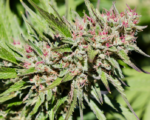British American Tobacco (NYSE: BTI) has caught the eye of dividend investors with its impressive 8.6% yield. This figure stands in stark contrast to the 1.2% yield offered by the S&P 500 index (SNPINDEX: ^GSPC) and the 2.5% average yield from consumer staples stocks, such as those in the Consumer Staples Select Sector SPDR (NYSEMKT: XLP). But before diving into BTI for its high returns, it’s essential to weigh the benefits against the inherent risks.
Understanding the 4% Rule and BTI’s Yield
The 4% rule is a popular guideline among retirees, suggesting that withdrawing 4% of a portfolio each year can sustain their savings throughout retirement. While some debate the exact percentage, the rule underscores that 4% isn’t a massive amount unless your portfolio is substantial.
Income investors often favor dividend stocks because they provide steady income without the need to sell assets. With a 4% yield, you’re aligned with the 4% rule, but BTI offers more than double that at 8.6%. This higher yield can significantly enhance your income stream, especially if your portfolio isn’t enormous. The allure is clear: higher dividends mean more income while preserving your principal investment.

Key Benefits of BTI’s High Dividend Yield:
- Increased Income: More substantial dividends can provide a reliable income stream.
- Principal Protection: Since dividends are paid out, you don’t need to sell your shares to generate income.
- Compounding Returns: Reinvested dividends can grow your investment over time.
However, higher yields often come with increased risks, and BTI is no exception.
The Risks Behind British American Tobacco’s High Yield
While an 8.6% yield is enticing, it’s crucial to understand why BTI offers such high returns. Typically, high yields signal potential red flags, such as slow growth or business challenges. For BTI, the primary concern lies in its core business: cigarette sales.
Declining Cigarette Volumes
British American Tobacco is grappling with a steady decline in cigarette sales:
- First Half of 2024: Volume fell by 6.8%
- 2023: Volume down by 5.3%
- 2022: Volume decreased by 5.1%
This consistent decline highlights a troubling trend. As public health initiatives and changing consumer preferences continue to reduce cigarette consumption, BTI’s revenue from its flagship product is under significant pressure.
Potential Impacts on Dividend Sustainability
A declining core business can threaten the sustainability of dividends. If BTI’s revenue continues to drop, the company might struggle to maintain its high yield. Here’s why:
- Reduced Cash Flow: Lower sales mean less cash available to distribute as dividends.
- Increased Debt: To sustain dividends, BTI might need to take on more debt, which can strain its financial health.
- Dividend Cuts: If financial pressures mount, BTI could be forced to reduce its dividend payouts, disappointing investors.
Evaluating BTI’s Financial Health
To determine whether BTI’s high yield is sustainable, it’s essential to assess the company’s financial health beyond just dividend figures.
Earnings Stability
Stable or growing earnings are a good indicator that a high dividend yield can be maintained. BTI’s declining sales suggest that earnings may also be on a downward trend, posing a risk to future dividends.
Debt Levels
High debt can be a red flag, especially if the company is using borrowed funds to pay dividends. Analyzing BTI’s debt-to-equity ratio and interest coverage ratio can provide insights into its ability to manage debt responsibly while maintaining dividends.
Diversification Efforts
BTI has been diversifying its product portfolio to include vaping products and other alternatives to traditional cigarettes. Success in these areas could offset declining cigarette sales, supporting the company’s overall financial health and dividend sustainability.
Market Sentiment and Analyst Opinions
Investor sentiment and analyst opinions play a crucial role in assessing the viability of BTI’s high yield. Many analysts caution against chasing high yields without considering the underlying business health.
Analyst Ratings
- Positive Outlook: Some analysts believe BTI can sustain its dividends through strategic diversification and cost-cutting measures.
- Negative Outlook: Others warn that the declining cigarette market and potential regulatory challenges could lead to dividend cuts.
Stock Performance
BTI’s stock performance relative to its dividend yield can also signal investor confidence. A stable or rising stock price, coupled with high dividends, is a positive sign. Conversely, a declining stock price may indicate underlying issues that could jeopardize dividend payouts.
Comparing BTI to Other High-Yield Stocks
When evaluating BTI, it’s helpful to compare it to other high-yield stocks to understand its position in the market.
Enterprise Products Partners (MLP)
- Yield: 7.2%
- Reason: Slow expected growth
- Comparison: BTI’s yield is higher, but it comes with more significant business challenges due to declining cigarette sales.
Consumer Staples Sector
- Average Yield: 2.5%
- Comparison: BTI’s yield is much higher, attracting more income-focused investors but also bringing higher risk.
Strategic Moves for Investors
If you’re considering investing in BTI, here are some strategies to mitigate risks while capitalizing on potential high returns:
Diversify Your Portfolio
Don’t put all your eggs in one basket. Diversify across different sectors and asset classes to reduce risk.
Monitor Financial Health
Keep a close eye on BTI’s financial statements, earnings reports, and dividend announcements to stay informed about the company’s health.
Consider Dividend Sustainability
Evaluate whether the high yield is supported by strong cash flow and earnings. Sustainable dividends are more reliable in the long run.
Stay Informed on Industry Trends
Understand the broader trends affecting the tobacco industry, such as regulatory changes, public health initiatives, and shifts in consumer behavior.
Conclusion: Weighing the Pros and Cons
British American Tobacco offers an attractive high yield that can significantly boost your income. However, the declining sales of its core cigarette business present substantial risks. Before investing, consider the sustainability of BTI’s dividends, the company’s financial health, and the broader industry trends.
Should You Invest in BTI?
- Pros: High dividend yield, potential diversification into new products.
- Cons: Declining core business, potential for dividend cuts, high risk associated with regulatory and market changes.
Ultimately, whether BTI can set you up for life depends on your risk tolerance and investment strategy. High yields can be tempting, but it’s essential to balance them with an understanding of the underlying risks to make informed investment decisions.
David Johnson is a respected writer known for his expertise in crafting compelling articles about cannabis. With a passion for exploring the intersection of cannabis, health, and wellness, he sheds light on the therapeutic properties and potential uses of this versatile plant. David’s in-depth analysis and thought-provoking commentary offer readers a deeper understanding of the evolving landscape of cannabis legislation, consumption methods, and industry trends.








